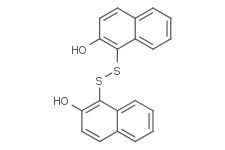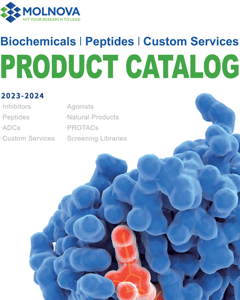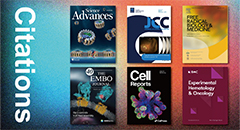
IPA-3
CAS No. 42521-82-4
IPA-3( IPA-3 | IPA 3 | IPA3 )
Catalog No. M18540 CAS No. 42521-82-4
IPA-3 is a selective non-ATP competitive Pak1 inhibitor with IC50 of 2.5 μM, no inhibition to group II PAKs (PAKs 4-6).
Purity : >98% (HPLC)
 COA
COA
 Datasheet
Datasheet
 HNMR
HNMR
 HPLC
HPLC
 MSDS
MSDS
 Handing Instructions
Handing Instructions
| Size | Price / USD | Stock | Quantity |
| 5MG | 35 | In Stock |


|
| 10MG | 55 | In Stock |


|
| 25MG | 106 | In Stock |


|
| 50MG | 194 | In Stock |


|
| 100MG | 341 | In Stock |


|
| 200MG | Get Quote | In Stock |


|
| 500MG | Get Quote | In Stock |


|
| 1G | Get Quote | In Stock |


|
Biological Information
-
Product NameIPA-3
-
NoteResearch use only, not for human use.
-
Brief DescriptionIPA-3 is a selective non-ATP competitive Pak1 inhibitor with IC50 of 2.5 μM, no inhibition to group II PAKs (PAKs 4-6).
-
DescriptionIPA-3 is a potent and selective PAK1 inhibitor. IPA-3 inhibits the growth of liver cancer cells by suppressing PAK1 and NF-κB activation. IPA-3 treatment significantly inhibited the growth of HCC cells. The mechanisms through which IPA-3 treatment suppresses HCC cell growth are enhancement of apoptosis and blockage of activation of NF-κB. IPA-3 not only inhibits the HCC cell growth, but also suppresses the metastatic potential of HCC cells. Nude mouse xenograft assay demonstrated that IPA-3 treatment significantly reduced the tumor growth rate and decreased tumor volume, indicating that IPA-3 can suppress the in vivo tumor growth of HCC cells. Hepatocellular carcinoma (HCC) is one of the major malignancies worldwide and is associated with poor prognosis due to the high incidences of metastasis and tumor recurrence. Overexpression of p21-activated protein kinase 1 (PAK1) is frequently observed in HCC and is associated with a more aggressive tumor behavior, suggesting that PAK1 is a potential therapeutic target in HCC.
-
In VitroIPA-3 inhibits Pak1 activation in part by binding covalently to the regulatory domain of Pak1. IPA-3 binds Pak1 covalently in a time- and temperature-dependent manner. IPA-3 prevents binding of the Pak1 activator Cdc42. IPA-3 binds directly to the Pak1 autoregulatory domain. IPA-3 reversibly inhibits PMA-induced membrane ruffling in cells. IPA-3 (2 μM, 5 μM or 20 μM) reduces cell spreading in human primary Schwann and schwannoma cells. IPA-3 treatment significantly reduces the number of adherent Schwann and schwannoma cells in a dose-dependent manner. IPA-3 is a non ATP-competitive, allosteric inhibitor of p21-activated kinase 1 (Pak1). PIR3.5 is the control compound of IPA-3. IPA-3 prevents Cdc42-stimulated Pak1 autophosphorylation on Thr423. IPA-3 also prevents sphingosine-dependent Pak1 autophosphorylation. IPA-3 does not target exposed cysteine residues on Pak1. The disulfide bond of IPA-3 is critical for inhibition of Pak1 and in vitro reduction by the reducing agent dithiothreitol (DTT) abolishes Pak1 inhibition by IPA-3. IPA-3 inhibits activation of Pak1 by diverse activators, but does not inhibit preactivated Pak1. IPA-3 inhibits PDGF-stimulated Pak activation in mouse embryonic fibroblasts.
-
In Vivo——
-
SynonymsIPA-3 | IPA 3 | IPA3
-
PathwayOthers
-
TargetOther Targets
-
RecptorPAK1
-
Research AreaCancer
-
Indication——
Chemical Information
-
CAS Number42521-82-4
-
Formula Weight350.45
-
Molecular FormulaC20H14O2S2
-
Purity>98% (HPLC)
-
SolubilityDMSO : ≥ 100 mg/mL 285.35 mM; H2O : < 0.1 mg/mL
-
SMILESOC1=CC=C2C=CC=CC2=C1SSC1=C2C=CC=CC2=CC=C1O
-
Chemical Name1,1'-disulfanediylbis(naphthalen-2-ol)
Shipping & Storage Information
-
Storage(-20℃)
-
ShippingWith Ice Pack
-
Stability≥ 2 years
Reference
1. Deacon SW, et al. Chem Biol, 2008, 15(4), 322-331.
molnova catalog



related products
-
SR9238
SR9238 is a synthetic agonist of liver X receptor inverse (IC50s: 214 nM and 43 nM for LXRα and LXRβ, respectively).
-
Panaxydiol
Panaxydiol is a natural product for research related to life sciences.
-
sHNG, [Gly14] - HN, ...
(Gly14)-Humanin (human) (14-Glycine-Humanin (human)) is an analog of Humanin in which the 14th amino acid serine was replaced with glycine (Gly). (Gly14)-Humanin (human) has anti-apoptotic and neuroprotective functions.



 Cart
Cart
 sales@molnova.com
sales@molnova.com


